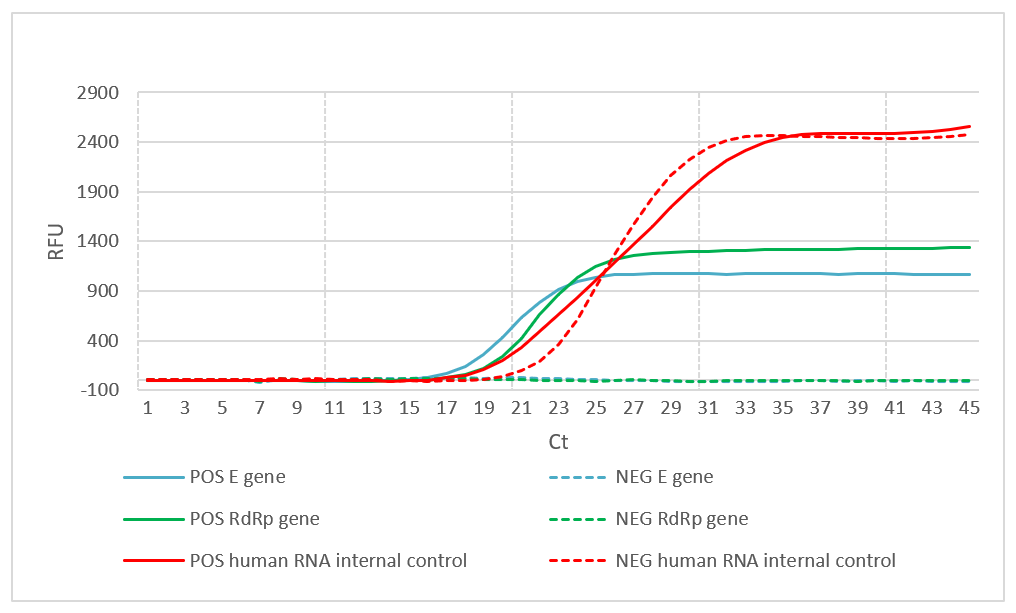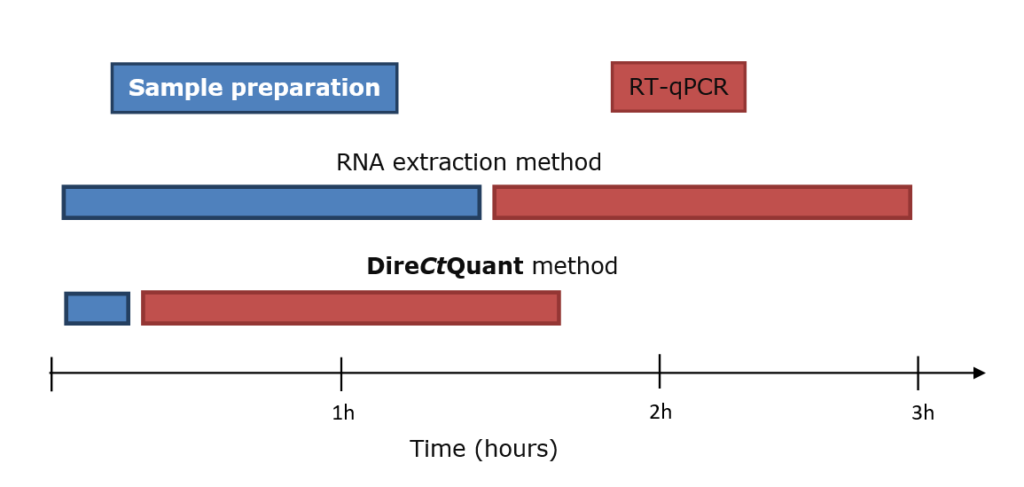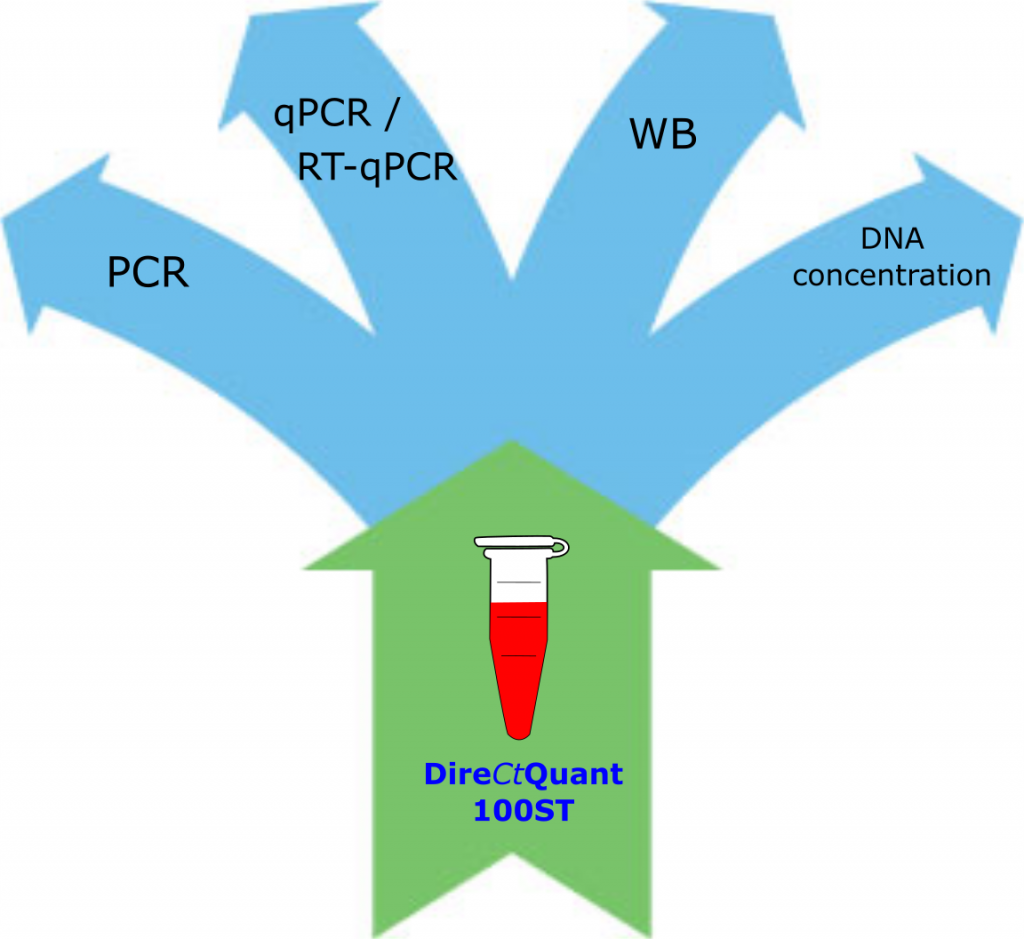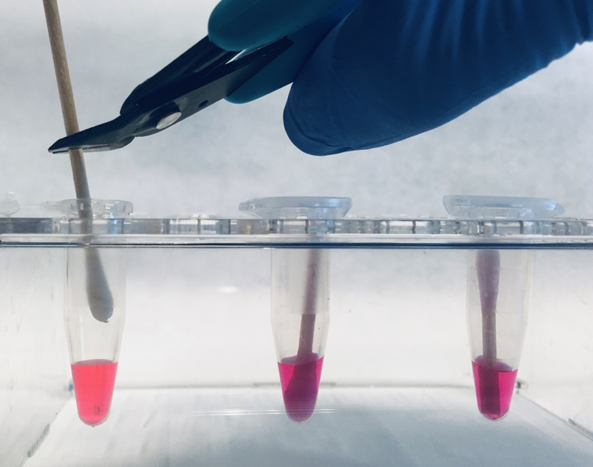Just 3 min between your sample and the success of your qPCR, RT-qPCR and Western blot.
DireCtQuant 100ST and DireCtQuant 100W are conceptually new DNA/RNA/protein solubilisation reagents. Those reagents provide instant and complete solubilisation of the cells in the sample and permit effective extraction of proteins, genomic, plasmid, plastid, mitochondrial and viral DNA as well as messenger, structural (such as ribosomal), transport, microRNA, non-coding and viral RNA.
DireCtQuant 100ST / DireCtQuant 100W can effectively solubilise any type of sample like animal tissue, cell culture, plans and fruits, yeast, prokaryotes.
In just 3 minutes the sample is ready for analysis!
The instant disruption of the structure of the cell and the biopolymers by DireCtQuant 100ST / DireCtQuant 100W effectively blocks the endogenous enzymatic activity of the sample, preventing any degradation of macromolecules and providing exceptional long-term storage conditions for the majority of the samples referred as Stop-The-Time technology.





